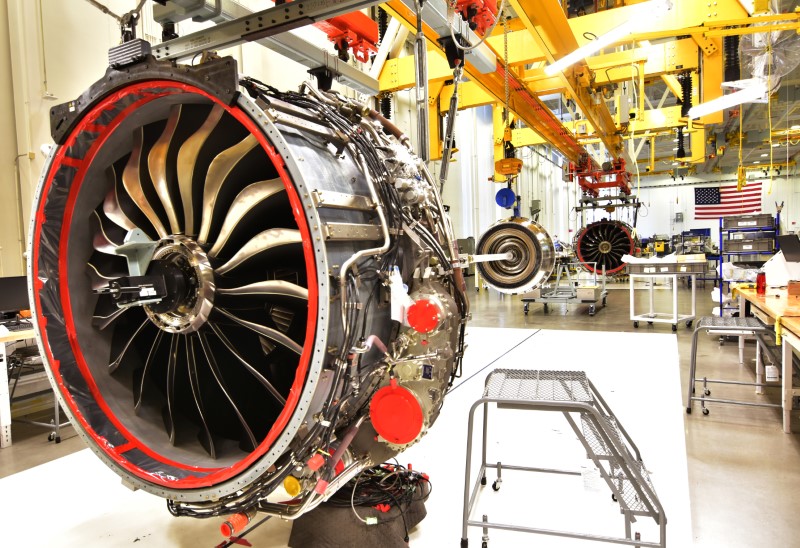By Lucia Mutikani
WASHINGTON (Reuters) - New orders for U.S.-made capital goods increased more than expected in August and shipments maintained their upward trend, pointing to underlying strength in the economy despite an anticipated drag on growth from Hurricanes Harvey and Irma.
The signs of an acceleration in business spending on equipment bolstered prospects of a December interest rate hike by the Federal Reserve, boosting the dollar and pushing up the yield on the two-year U.S. Treasury note to its highest level since 2008.
The Commerce Department said on Wednesday non-defense capital goods orders excluding aircraft, a closely watched proxy for business spending plans, rose 0.9 percent last month after an upwardly revised 1.1 percent gain in July.
"The manufacturing sector appears to be a bright spot in the U.S. economy," said John Ryding, chief economist at RDQ Economics in New York.
Economists had forecast orders of these so-called core capital goods increasing 0.3 percent last month following a previously reported 1.0 percent jump in July. Core capital goods orders surged 3.3 percent year-on-year. Shipments of core capital goods rose 0.7 percent after advancing 1.1 percent in July. Core capital goods shipments are used to calculate equipment spending in the government's gross domestic product measurement.
The Commerce Department said it was unable to isolate the effects of Hurricanes Harvey and Irma on the data. Harvey, which devastated parts of Texas, has hurt August retail sales, industrial production, homebuilding and home sales.
Irma, which struck Florida early this month, is expected to further hold down housing activity. That was flagged by a report on Wednesday from the National Association of Realtors showing that contracts to buy previously owned homes dropped 2.6 percent in August to a 19-month low.
As a result, the storms are expected to cut into third-quarter economic growth. Third-quarter GDP growth estimates are below a 2.5 percent annualized rate. The economy grew at a 3.0 percent pace in the second quarter.
The Federal Reserve last week signaled it expected to raise rates for the third time this year. Most economists expect the rate hike will be in December.
The dollar raced to a more than one-month high against a basket of currencies on the data. Prices for U.S. Treasuries fell, with the yield on the interest-rate sensitive two-year note hitting its highest level since November 2008. U.S. stocks were trading mostly higher.
STRONG BUSINESS INVESTMENT
Business investment on equipment has been buoyed by the energy sector, where oil and gas drilling has rebounded after declining in the wake of a collapse in crude oil prices. Spending could get a further boost from plans by President Donald Trump to slash taxes and overhaul the tax code.
Trump and Republicans in the U.S. Congress are proposing a 20 percent corporate income tax rate, a new 25 percent tax rate for pass-through businesses such as partnerships, and a reduced 35 percent top income tax rate for individual Americans. Trump is expected to unveil the plan later on Wednesday.
Business spending on equipment added almost half-a-percentage point to GDP in the third quarter, the most in nearly two years. That is supporting manufacturing, which accounts for about 12 percent of the U.S. economy.
"Business equipment investment is on track for a big rise in the third quarter," said Michael Pearce, a U.S. economist at Capital Economics in New York.
Last month, orders for machinery, primary metals, computers and electronic products as well as transportation equipment increased.
Overall orders for durable goods, items ranging from toasters to aircraft meant to last three years or more, rebounded 1.7 percent last month as bookings for transportation equipment jumped 4.9 percent.

Durable goods orders fell 6.8 percent in July.